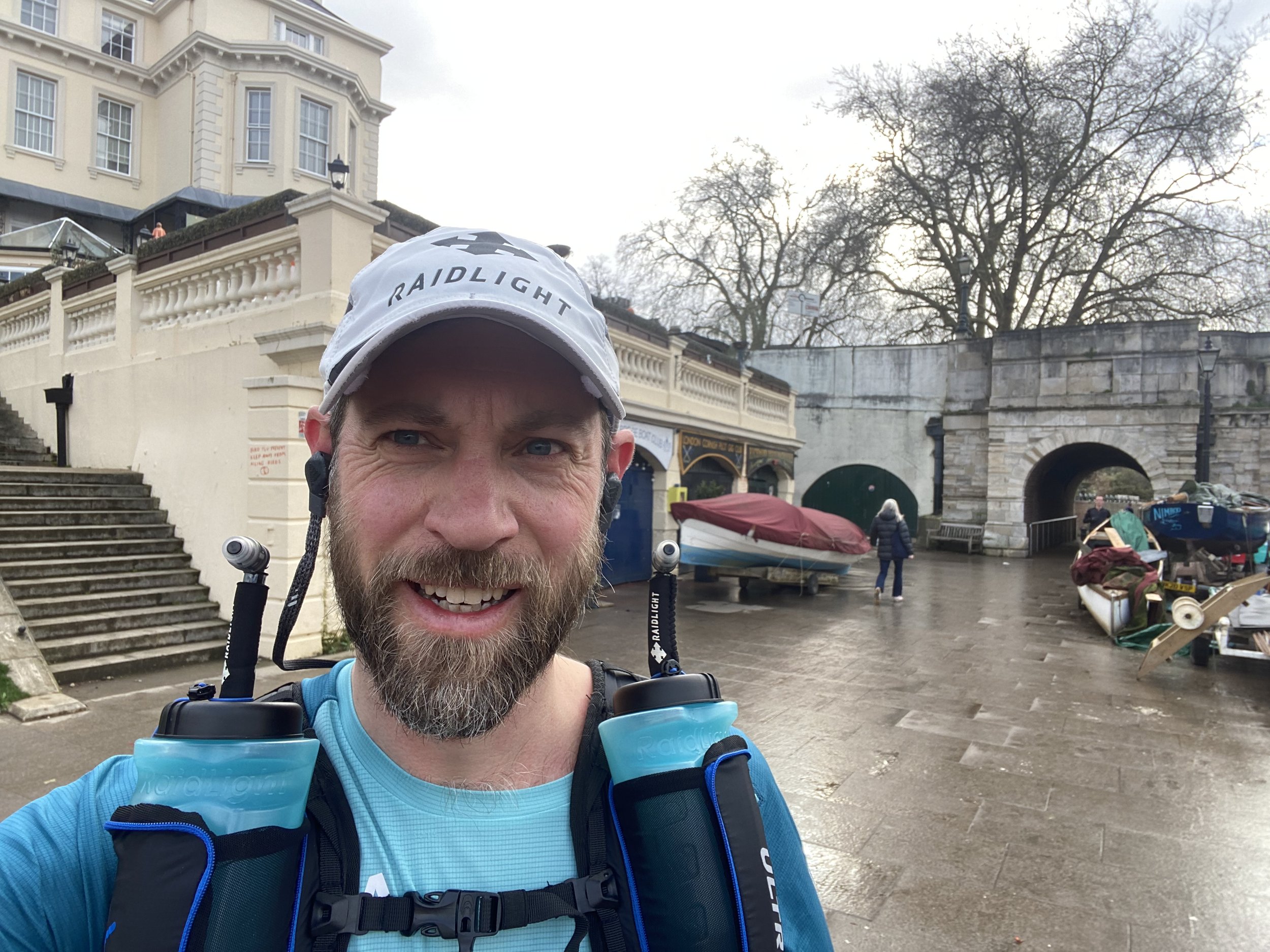
Don’t train like me!
I work full time and have two small children, so tried to fit my training around my personal situation. This meant that I was maxing out at around 30-40 miles per week on a good week. It’s just enough to complete the MDS, but it certainly made life harder on the track. I started in January a year before, so had plenty of run in, but I was making it up as I went along. Here are some lessons learned from an amateur!
Accept you’ll need to modify your life
I didn’t want to alter my day to day life too much to accomodate MDS training. I tried as much as possible to replace my commute on public transport by running home instead. This became quite a neat routine, but was never quite enough distance and too repetitive. I then fit in a longer run (up to about 20 miles) on an early weekend morning, leaving at 5 or 6am. My training regimen was by far the least that anyone in the tent did. Accept you’ll need to make life changes to get the amount of training in you need to do well. You don’t need to be a training bore though, it can be done without ruining your social life!
Get professional advice
I made my training plan up as I went along. I did some Googling of what others had done previously (there’s not much to be found of any use), but didn’t seek any professional advice. If you have the money to spend, it’s probably worth it, even just to help you draw up a training plan. Try Elisabet Barnes at Ultra Coach.
Don’t overtrain - take it easy!
I started out trying to run as fast as I could each run. Unsurprisingly I injured myself. A good few weeks out with an achilles injury wasn’t a great start. I then worked back up to some decent distances, but was running almost every day. Again, injury struck. Two early lessons learned, take it slow and leave rest days. Also learn about recovery. I was a newcomer to recovery shakes, but soon got in the habit of sinking one straight after training. There are lots to go with, but I chose Tailwind Recovery Mix.
Enter a few warm up races
I entered a few warm up races in the run up to the MDS. These are great to test yourself over distance, test your kit and also meet other people who are doing the MDS. I entered the Salisbury Plain Marathon, the Pilgrim’s Challenge and the North Downs Ridge 50k. These helped me narrow down rucksack, trainer and snack options. They also showed me my run/walk limits and where I was against others in terms of training and fitness levels.
Prepare for the heat
My sole heat training was a beach holiday 6 months beforehand! 2023 was a particularly hot year and we lost about a third of the field, largely due to heat exposure. I massively felt it. It was very nearly my downfall on a few occasions as I was simply not prepared for it. I had tried to find a heat chamber in London, but due to various reasons (broken, staff on strike etc) not of them were operating. There was one in Loughborough, but I couldn’t make the timings work. This is definitely an area to accept you will need to sacrifice time and money to get it done. Don’t scrimp on this bit.
Don’t forget strength training
I started off with running. Just running. For Christmas before the race I was given a series of strength training sessions with a personal trainer. These were a godsend. I did one a week, but would up this to at least two if I did it again. I’d also focus more on hills. I fit in a few scattered hill training sessions. But definitely not enough. You don’t find out the route until you are on the coach in Morocco, but rest assured, there will be hills. Lots of them.







